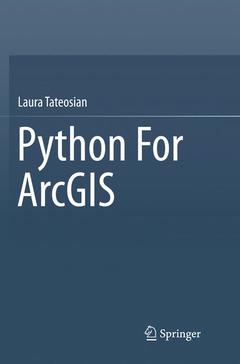Description
Python For ArcGIS, Softcover reprint of the original 1st ed. 2015
Author: Tateosian Laura
Language: English
Subjects for Python For ArcGIS:
Publication date: 03-2018
Support: Print on demand
Publication date: 01-2016
538 p. · 15.5x23.5 cm · Hardback
Description
/li>Contents
/li>Biography
/li>Comment
/li>
Introduction.- Beginning Python.- Basic data types: numbers and strings.- Basic data types: lists and tuples.- Preparing for Python in ArcGIS.- Calling tools with arcpy.- Getting user input.- Controlling flow.- Decision-making and describing data.- Repetition: Looping for geoprocessing.- Batch geoprocessing.- Additional looping functions.- Debugging.- Error handling.- User-defined functions.- User-defined modules.- Reading and Writing with Cursors.- Dictionaries.- Reading & writing text files.- Working with HTML & KML.- Classes.- User interfaces for file and folder selection.- ArcGIS Python GUIs.- Mapping module.
These books may interest you

Getting to know ArcGis 119.53 €



